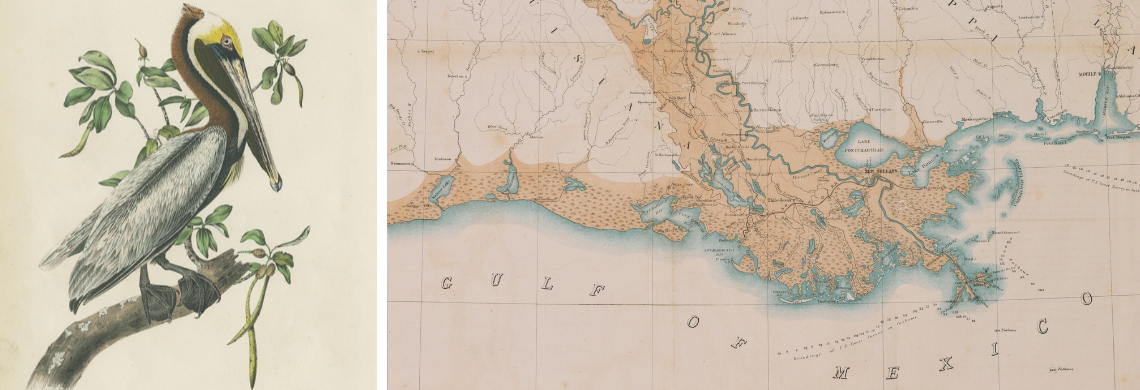A Vanishing Bounty: Louisiana's Coastal Environment and Culture
Ongoing Exhibition
Tuesday–Saturday, 9:30 a.m.–4:30 p.m.; Sunday, 10:30 a.m.–4:30 p.m.
520 Royal Street, Seignouret-Brulatour Building, 2nd Floor
Free ticketed admission
About the Exhibition
In the marshes of Louisiana, where sediment-rich water mingles with the salt water of the Gulf of Mexico, plants, insects, and animals coexist within a thriving ecosystem to which humans have also adapted. Waves of people—of Indigenous, African, European, and Asian origin—have shaped the region’s culture and its ways of life. We share this place with a bountiful marine population, migratory and year-round birds, and such charismatic animals as the alligator and the crawfish.
The coastal region’s rich animal life and other natural resources have made it an attractive place for human habitation. But coastal industries are a double-edged sword. The area is threatened by a number of factors—erosion caused by oil exploration and the destruction of cypress swamps, invasive species that threaten to crowd out native plants and animals, and climate change, which raises sea levels and creates stronger hurricanes.
Through images, objects, and interactive multimedia installations, A Vanishing Bounty: Louisiana’s Coastal Environment and Culture will address both the region’s abundance of natural life and the threats to its welfare. Visitors will experience the beauty and utility of cypress forests, learn of the peoples of the coast and their adaptations to its ecosystems, and see (and hear) the wildlife that inhabits the region’s land, air, and water.
From a rare second edition of John James Audubon’s double-elephant folio The Birds of America (one of the most important works of natural history ever created) to a selection of the beautiful duck decoys from the Stephens Family Collection, A Vanishing Bounty will tell a story rich in history, nature, culture, and caution.



